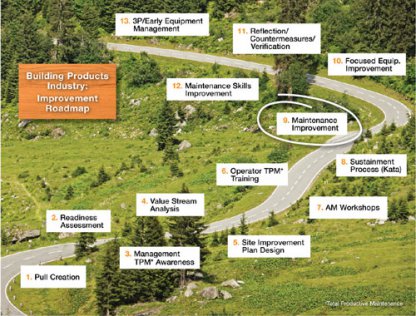Implementation Roadmap Milestone 9— Maintenance Improvement
The goal of Maintenance Improvement is to move away from reactive to a proactive or planned maintenance process. As part of this process, maintenance personnel analyze breakdowns to reveal equipment weaknesses and then modify equipment to improve its operation, maintainability and lengthen equipment life
WHAT TO EXPECT
Key Outcomes: An action plan was written to address potential failure of all similar conditions across other production lines and vacuum systems. The internal reliability team is now trained on the practice of Machine Failure Analysis and can now apply the process when needed.
The 8 Steps of Failure Analysis:
- Clarify the phenomenon
- Conduct a physical analysis
- Identify constituent conditions
- Study the 4Ms for casual factors
- Set optimal conditions and standards
- Plan and conduct a survey of factors
- Identify abnormalities to be addressed 8. Propose and make improvements
SUMMARY
Situation Summary: Reactive maintenance practices within the facility resulted in unplanned downtime which led to production disruptions and lost yield.
Improvement: All failed components of the vacuum system were replaced and like systems were inspected for like failures. Maintenance standards and Preventative Maintenance practices were updated and rewritten to include inspection and/or replacement of the failed components on the vacuum system.
Benefits: The maintenance reliability team has reviewed all documentation of the system and is now greater prepared to troubleshoot the systems in the future. Production lines will see increased run-time due to reduced unplanned downtime from this particular failure. Application of the Machine Failure Analysis process can now be employed immediately in-house reducing further unplanned downtime.


